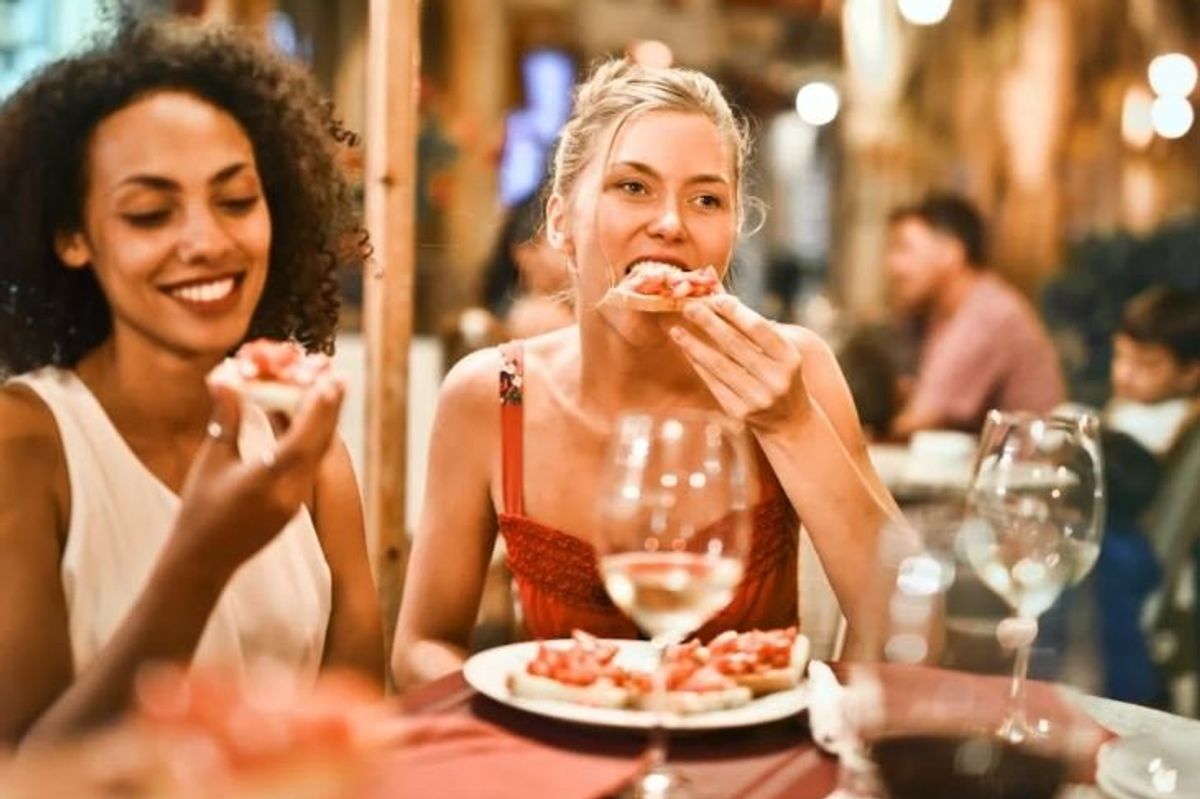A new trend has Americans going out to dinner earlier than ever before and with good reason
Are we turning into our grandparents?

Two women enjoy a tasty early dinner.
Eating an early dinner has always been a stereotype associated with older, retired people who don't have to worry about work schedules and traffic. Plus, older people tend to have an early-to-bed, early-to-rise schedule and are more concerned about thoroughly digesting their meals before hitting the hay.
But an unexpected change in the great American culture means that older people and Gen Zers are more likely to fight each other for a 5 p.m. reservation at their local diner. A recent story in The Wall Street Journal shows that an increasing number of Americans are going out to dinner earlier.
According to Yelp data cited by the WSJ, restaurants currently seat 10% of diners between 2 p.m. and 5 p.m. That number has doubled since 2019 when only 5% of people went to restaurants between those hours. People are also taking Ubers to dinner earlier these days, with a 10% jump in rides between 4 p.m. and 5 p.m. and a 9% drop in those after 8 p.m.
The trend has also caught on in New York City, which, at one time, was known for being a city that never sleeps. RESY reports that reservations across New York City made at 5:30 p.m. have jumped from 7.75% to 8.31% over the past two years, while 8 p.m. reservations have fallen to 7.8%, down from 8.31%.
So what has happened? Have Americans been so run down by the last few years that they’re now acting like their grandparents? Is it more important to binge TV before bedtime than burn the midnight oil with friends? The Robb Report attributes the change to hybrid work. These days 34% of people work from home most of the time, so they can leave the house a lot earlier than before. Plus, when you’re cooped up in your house all day it’s nice to get out and enjoy a bite to eat as soon as possible.
Broadway has adapted to the new trend by scheduling its performances earlier in the day. Movie theaters accommodate the new early-bird lifestyle by adding more early screenings and canceling those that run late at night.

A group of friends enjoying an early dinner
Devorah Lev-Tov from RESY New York applauds the change. “A few years ago, we would’ve joked about dining with all the old folks or being condemned to screaming children. Yet now, 5 or 5:30 p.m. is my preferred time to dine … And I’m not alone,” Lev-Tov writes.
According to research, this new change in the American lifestyle could benefit our collective health.
A study published by Cell Metabolism found that people who eat all their meals within a 10-hour window and finish dinner earlier in the day are less hungry, burn calories faster and have a lower risk for obesity.
This rapid change in America’s dining habits shows how sometimes the things we think are deeply embedded in our culture can easily change overnight. The next question is, will brunch still be brunch when people begin eating it at 7:30 a.m.? Because then it’s just breakfast, and drinking champagne for breakfast feels uncouth. But then again, that could change, too.
This article originally appeared on 7.4.23
- I Lived Mas at The Taco Bell Hotel ›
- Mom who packs her child a meal when going out to restaurants has parents fired up ›
- The 'Sioux Chef' works to return indigenous food to the forefront of the American diet ›
- Wife can't stand her husbands extreme dietary restrictions. Asks for help. - Upworthy ›
- Doorbell camera captures little boy's adorable rant about his mom's nightly chicken dinners - Upworthy ›

